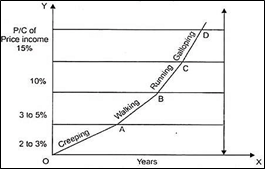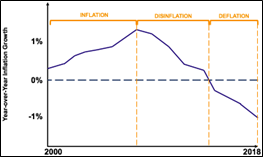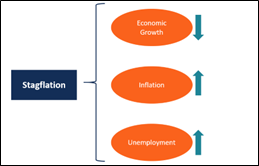1. Creeping Inflation
-
- Moderate level of inflation (2-3%)
- It is generally considered good for the economy as factors of production are efficiently employed.

2. Hyperinflation
-
- Near exponential rise in inflation (More than 50%)
- It is commonly associated with large increase in the supply of money.
- It leads to collapse in the value of local currency.
3. Deflation
-
- Decrease in the prices of goods and services
- Also known as negative inflation (ie, inflation below zero)
- Generally associated with rise in unemployment

4. Disinflation
-
- Rate of change of inflation is negative
- It shows that inflation is declining over time but still it remains positive (ie, never below zero)
5. Stagflation
-
- Stagnated economic growth (near zero) as well as high inflation
- Period of no economic growth coupled with high unemployment
- It renders monetary policy ineffective and demands for higher government expenditure to boost confidence in the economy.

6. Skewflation
-
- Inflation is disproportionate in terms of commodities
- Inflation in some commodities while deflation in others

